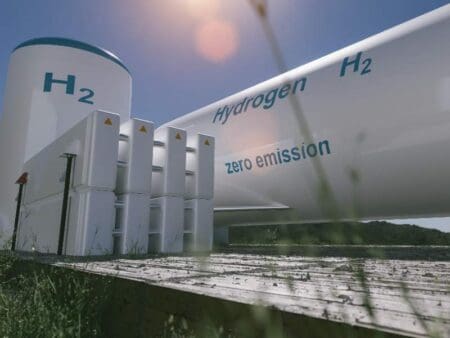
Coordination between hydrogen projects and electric and gas grid developments is needed to ensure compatibility and optimality at the energy system level, a new review from ETIP SNET indicates.
The study, aimed to investigate the impact of the large-scale integration of hydrogen electrolysers to the grid, points to hydrogen as complementary to electrification for decarbonisation targets rather than a target in itself, with the first applications likely to be for substituting grey hydrogen in present industrial processes.
However, electrolysers will progressively become an additional system element, which implies that it should be planned and operated synergically with the rest of the energy system.
The report identifies four key issues, i.e. the relationship between supply and demand, the use cases and their impact on the grids, flexibility and the impact on system planning.
Have you read?
Renewables connection times higher than desired in Europe – E.DSO
Why hydrogen is the right-time-right-place electricity delivery option
As a new system component, the recognition of green hydrogen requires an ad-hoc scheme, valid across jurisdictions, for the infeed electricity encompassing the additionality principle, in order to avoid double counting and greenwashing as well as cannibalisation of other decarbonisation processes.
In addition, there needs to be both geographical and time correlation to ensure the utilised renewable energies are not impaired by grid congestion.
At the grid operation level, in order to better exploit the variability of renewable energies, the flexible operation of the power system requires to decouple as much as possible the profiles of green hydrogen production from hydrogen consumption.
This means having enough storage elements both in the power system and in the hydrogen system.
With this, the hydrogen system also can provide long-term flexibility, through storage of excess renewables in gas reservoirs, as well as adequacy support.
Short-term flexibility services also are possible via demand response and balancing from electrolysers.
In terms of planning hydrogen projects should be designed and assessed starting from the end use case, volumes and costs, not from the supply side, which must follow the needs of the end user.
From the energy system point of view, the deployment pace of electrolysers should match the increase of the large amount of additional renewables volumes required for producing green hydrogen, in order not to cannibalise other decarbonisation processes.
Other infrastructure, such as pipelines and storage facilities, also need to be coordinated with grid developments as well as end user needs.
The report also notes ‘hydrogen valleys’ as a promising configuration for starting the development of comprehensive use cases.
In conclusion, the report highlights the need for a ‘one system’ view, noting that the viability of hydrogen projects is both case and country-dependent.
Win-win solutions matching business needs with system requirements must be found in order to maximise the benefits for all stakeholders.
For a smooth but fast transition phase, repurposing the gas grid, also through initial blending, is suggested as a viable and smart option to enable a gradual phase-out of natural gas and set-up of a hydrogen market.








